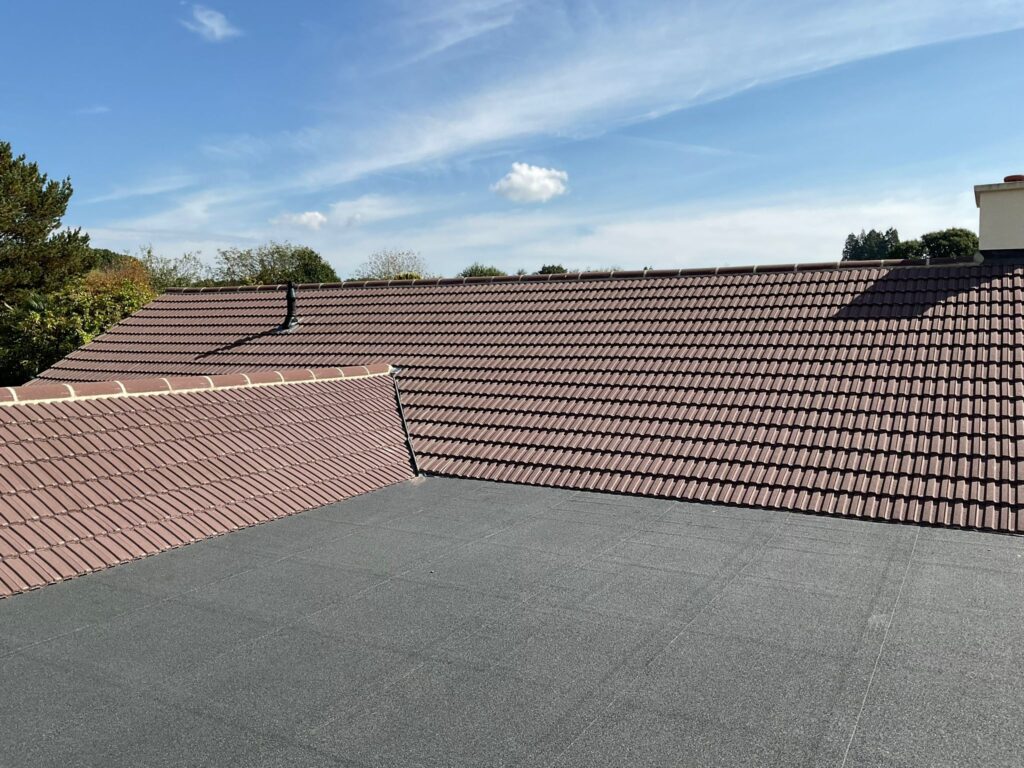Introduction
When homeowners think about roof problems, they often focus on tiles, gutters, or the overall structure. But one of the most common — and most overlooked — culprits of serious water damage is faulty flashing. Roof flashing is the thin metal material used to direct water away from critical areas like chimneys, vents, skylights, and roof valleys. If flashing fails, even the best roof will eventually let water in.
At LS Roofing Marlow, we’ve seen countless homes across Buckinghamshire suffer unnecessary damage because of minor flashing issues that went unchecked. Let’s take a closer look at 10 flashing faults that can cause major leaks and what to watch out for.
1. Improper Installation
Poor workmanship is the root of many flashing problems. If the flashing isn’t properly lapped, sealed or fixed in place, it creates gaps that water can easily exploit. This is especially common in DIY or rushed roofing jobs.
2. Corrosion and Rust
Flashing is usually made from galvanised steel, aluminium, or lead — but even these materials will degrade over time if not maintained. Rusted flashing loses its waterproof seal and begins to break apart, allowing moisture to creep underneath.
3. Loose or Missing Sections
High winds, storms, or poor fixing methods can cause flashing to become loose or even fall away entirely. Once flashing lifts, water can get under tiles and rot the wooden structure below.
4. Cracked Sealant
Flashing is often sealed with a waterproof compound or caulk. Over time, exposure to sun and weather causes this sealant to dry, crack, and peel — compromising the entire barrier.
5. Flashing Pulling Away from Brickwork
On properties with chimneys or brick walls, step flashing or counter flashing can separate from the mortar joints. This leaves an open pathway for rain to enter behind the flashing and into the roof space.
6. Improperly Integrated with Roofing Material
Flashing must be carefully tied into the surrounding tiles or slates. If it’s laid over the top instead of integrated underneath or in line, water can easily slip beneath it.
7. Flashing in Roof Valleys Not Lapped Correctly
Roof valleys handle high volumes of water flow. If the valley flashing is not properly overlapped and sealed, water can pool, penetrate, and lead to rot or internal leaks.
8. Poor Flashing Around Skylights and Roof Windows
These modern additions are common weak spots. Incorrect or inadequate flashing around skylights leads to water ingress that may not be visible until ceiling stains or damp patches appear.
9. Movement of the Structure
Houses shift slightly over time — and roofs expand and contract with temperature changes. If flashing hasn’t been installed with enough flexibility, it can crack or pull away from the structure.
10. Blocked Gutters Causing Water Back-Up
Sometimes it’s not the flashing itself, but what surrounds it. When gutters are clogged, water builds up and can overflow into flashing areas, leading to moisture intrusion that flashing alone cannot handle.
Key Takeaways for Homeowners
- Always inspect flashing during routine roof maintenance
- Look for rust, gaps, or lifted sections around chimneys and roof joints
- Don’t ignore damp patches near ceilings or around loft spaces — flashing may be the culprit
- Call in professionals like LS Roofing Marlow if you suspect flashing damage
Conclusion
Flashing may seem like a minor detail, but it’s a small component with a big responsibility. Neglecting it can lead to major leaks, costly interior damage, and even structural repairs. Many homeowners in Marlow only discover a problem once the water has already entered — by then, the cost and stress are far greater.
If your roof is showing signs of age, or you’ve experienced repeat leaks in the same areas, it might be time for a flashing inspection. At LS Roofing Marlow, we’re committed to delivering roofing solutions that last — and that starts with proper flashing. Get in touch today to protect your home before small problems become big ones.
Call us on: 01628 562 896
Click here to find out more about LS Roofing Marlow
Click here to complete our contact form and see how we can help with your roofing needs.

